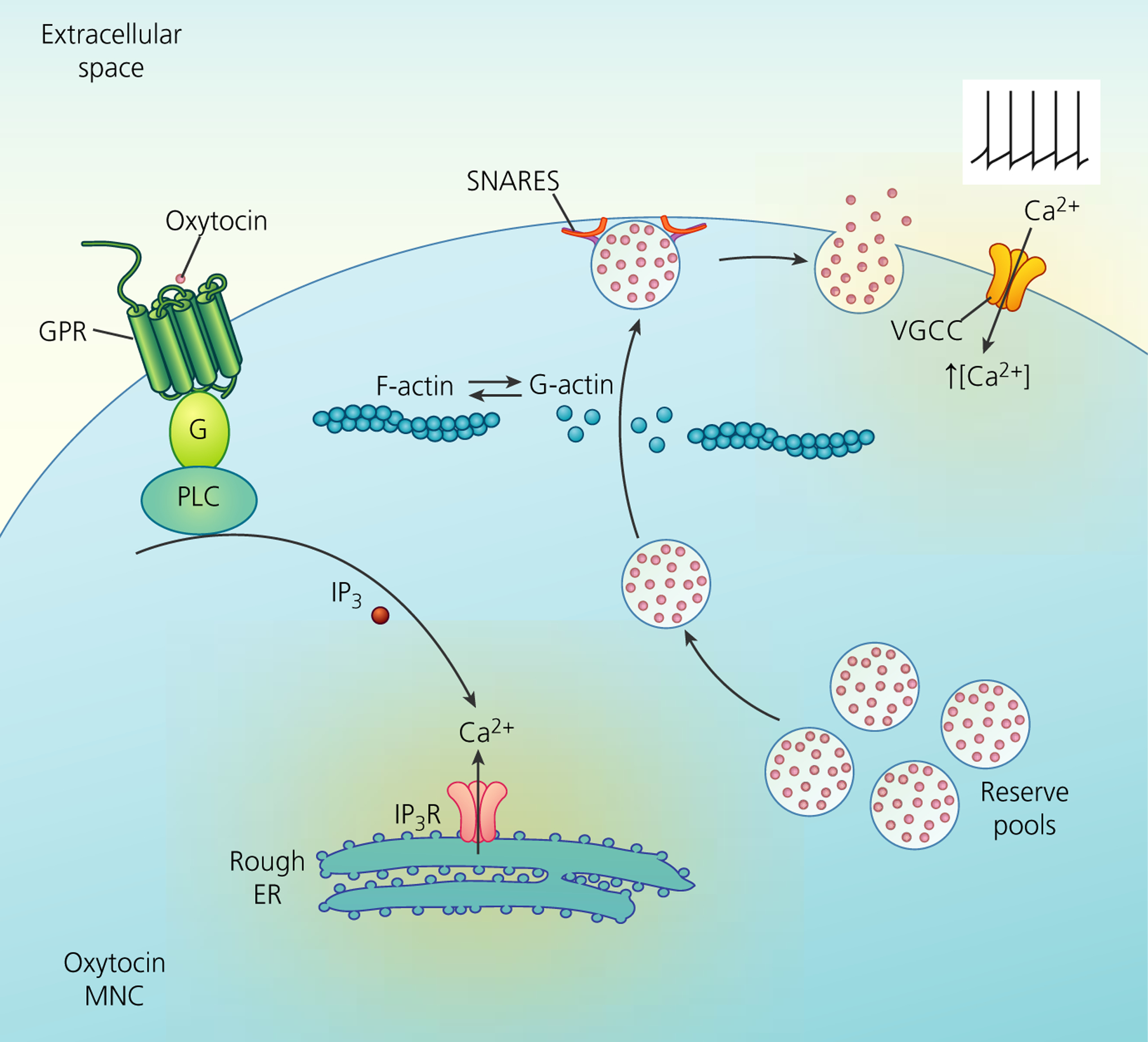FIGURE 2.

Mechanisms of somato-dendritic release of oxytocin from magnocellular neurosecretory cells (MNCs). Neuropeptides are synthesised and packaged in the soma and stored in dendrites in a reserve pool containing large numbers of large dense-core vesicles (LDCVs). Depolarisation-induced calcium entry through voltage-gated calcium channels (VGCCs) stimulates peptide release by exocytosis of LDCVs. This requires the depolymerisation of F-actin to G-actin. Furthermore, the stimulation of G-protein coupled receptors (GPR), such as the oxytocin receptor, stimulates the mobilisation of Ca2+ from inositol trisphosphate (IP3)-dependent intracellular stores of the rough endoplasmic reticulum (ER) and an increase in the number of LDCVs at the plasma membrane, thus priming the exocytosis machinery for subsequent activity-dependent release. Although some members of the soluble N-ethylmaleimide-sensitive factor attachment receptor (SNARE) family are detectable by immunocytochemistry, there appears to be a lack of vesicle-associated membrane protein-2, synaptosomal-associated protein 25 and synaptotagmin-1 in the somata and dendrites, with their function presumably being replaced by other SNARE proteins. IP3R, inositol trisphosphate receptor; PLC, phopholipase C
